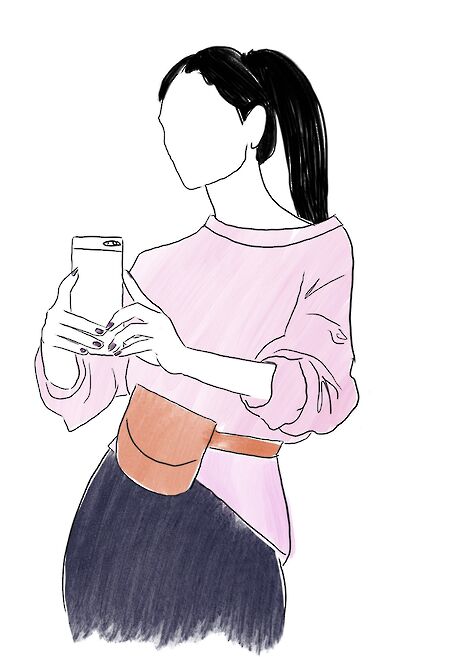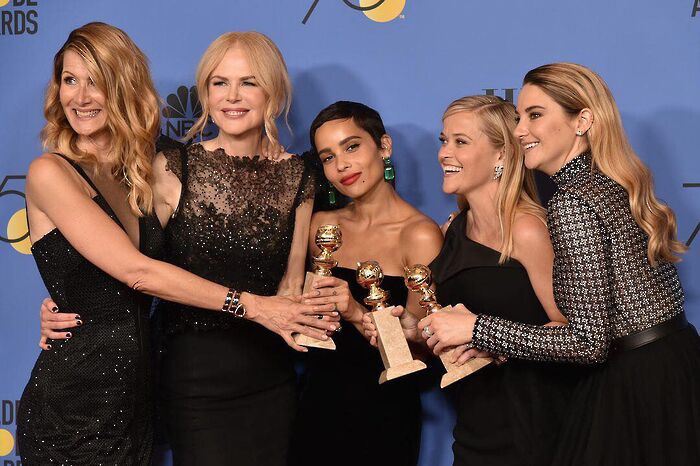The Instagram influencer: Fashion’s most powerful player?
As Instagram continues to conquer the world, Helena Baron looks at how its presence has forced the fashion industry to reconfigure the trend-setting power dynamic.

Back in 2007, a certain Kim Kardashian may have been known only as Paris Hilton's BFF. Fast forward to 2018 and her traumatic rise to fame is but a distant memory of probably the first influencer, often seen rubbing shoulders with the likes of Balmain’s Olivier Rousteing, Virgil Abloh of Off-White fame, Karl Lagerfeld from Chanel and of course her husband Kanye West, the founder of Yeezy.
Her very particular style, at times somewhat derided by fashion die-hards, is one of the most emulated across the globe, with countless online outlets producing cheaper knock-offs of beige peddle-pushers overnight for an avidly-awaiting millennial customer base. The phenomenal transformation from reality television casualty to fashion darling was aided in no small part to an almost simultaneous rise of fashion’s beloved social media platform: Instagram.
Do designers still influence street-style stars? Or have the tables turned?
As Instagram and the Kardashian fame grew, a template was set for what we now call ‘influencers’. With the Kardashian clan finally embraced by the fashion community, the door was opened to anyone who garnered a large enough audience to grab the attention (and of course lucrative endorsements) of the heretofore secretive and exclusive fashion industry. Whilst in the past brands counted on supermodels and celebrities to promote their goods, today, the fashion world is inundated with influencers ranging from fashionable Tokyo kids and those simply famous-for-being-famous. The coveted title of ‘Influencer’ does not come without reason: with millions of followers (Kim herself has 124 million, model Gigi Hadid has 45 million and blogger Chiara Ferragni has 15.8 million), this modern, internet-driven celebrity has a previously unimaginable reach, touching and reflecting a largely young generation.

And it’s not just confined to the super rich, famous-for-being-famous clan; street-style stars previously confined to the streets and articles curated by glossy bibles now have an unprecedented, immediate and open platform to share their #OOTD, their #fashionweek and of course #streetstyle or perhaps more aptly #instastyle. With these hashtags and the platform’s capacity for ‘going viral’, street-style stars are able to directly and immediately inspire their followers, if not come to dictate day-to-day changes in mass trends, something previously reserved for editors of glossy mags, and a select few brands.
This new-found domination has exacerbated one of the biggest questions hanging on the industry’s lips over the past few years, namely the power struggle between street-style and runway fashion: Which of the two really dictates trends? Do designers still influence street-style stars? Or have the tables turned? Could street-style stars really hold trend-setting power over the brands themselves?
Something of a chicken-and-egg conundrum, a different journalist will present you with a different opinion, a street-style star will rave about the latest brand to pay them, and a designer will wax lyrical on the importance of fashion’s artistic purpose not being lost in its commercial value. Now, however, we must once again take stock of the power behind trendsetting, with the Instagram influencer entering the game as a third and much more mysterious, not to mention powerful, player.
In recent years we have seen figures such as Virgil Abloh at Balenciaga and Off-White and Demna Gvasalia at Vetements bring a certain anti-fashion, street-inspired sensibility to their collections. Even brands such as Céline have brought out items such as the now-infamous £425 plastic bag, a thinly-veiled appropriation, it seems, of the normcore-come-expensively-normal turn that fashion trends have recently been taking. So why has this genre of street-style become such a game-changer? Why does it hold such power?
The idealist in me likes to think that the millennial consumers of platforms such as Instagram represent a more politically-engaged, socially-curious and culturally-aware audience than ever before. Some of the biggest style Influencers such as Adwoa Aboah, Ashley Graham, Halima Aden and even Sinéad Burke are emulated not only for their unique styles but also, if not more so, for their voice, which they use to promote equality and diversity within the industry. In turn, it would appear that slowly but surely, brands are responding in kind. Designers such as Maria Grazia Chiuri at Dior have taken on quite explicitly political tones in their runway shows (sure enough followed by vast social media coverage and engagement); designers across the board supported Oscar-attendees in their all-black dress code as a show of solidarity with the #MeToo movement; more and more brands have renounced the use of real fur in their collections.
The cynic in me, however, is all too aware that with the newly young customer base also brings with it a hunger for celebrity status, as well as the often hushed-up lucrative potential for these style influencers. Ultimately, an influencer is at the whim of, or at least susceptible to, the highest bidder, invariably one of the already well-established and recognisable brands. So where does that leave the lesser-known, new faces of fashion?
One of the most attractive things about street-style was always the unknown, unexpected labels and designers you might come across, as well as the novel and organic way in which people put their outfits together. But with the rise of endorsements, and the very lucrative price tag they entail (Hopper HQ's Instagram rich list 2018 reports that Camila Coelho earns up to $10,750 per post, Kylie Jenner up to $1,000,000), is creativity slowly slipping through the commercial cracks? Is the obsession with celebrity constraining creative freedom? Are the dismissals of the likes of Raf Simons at Calvin Klein and appointments such as Hedi Slimane at Céline indicative of a pressure for brands to streamline their image into a more digestible, accessible package that a maximum of influencers will wear, and thus a maximum of potential clients will see?
Finding the balance between commercial success and creative credibility has long been a struggle for labels, classically setting the creative intentions of their creative direction against the financial goals of their owners. But for those who regard the industry as a much-needed cradle of creative innovation, the newly-found financial investment potential of the street-style influencer may well pose a threat of flattening creative diversity into celebrity blandness. That said, the viral potential of social media is perhaps just as enticing as it is threatening; never before have labels had the chance to grow their fan base so quickly. Jaquemus, for instance, almost completely grew his brand and image via Instagram, dressing his friends and now celebrities in his sun-kissed designs. He is now a much-anticipated slot in the Paris Fashion Week calendar.
It appears the industry has not yet decided whether the social media star really could pose a threat, instead choosing to reap its many rewards. We can but hope, then, that the platform’s potential to promote individuality and creativity and to create a space for marginalised voices to be heard is not trumped by its vast commercial promise.
 News / Cambridge study finds students learn better with notes than AI13 December 2025
News / Cambridge study finds students learn better with notes than AI13 December 2025 News / Cambridge Vet School gets lifeline year to stay accredited28 November 2025
News / Cambridge Vet School gets lifeline year to stay accredited28 November 2025 Science / Did your ex trip on King’s Parade? The science behind the ‘ick’12 December 2025
Science / Did your ex trip on King’s Parade? The science behind the ‘ick’12 December 2025 News / Uni Scout and Guide Club affirms trans inclusion 12 December 2025
News / Uni Scout and Guide Club affirms trans inclusion 12 December 2025 Arts / Modern Modernist Centenary: T. S. Eliot13 December 2025
Arts / Modern Modernist Centenary: T. S. Eliot13 December 2025









